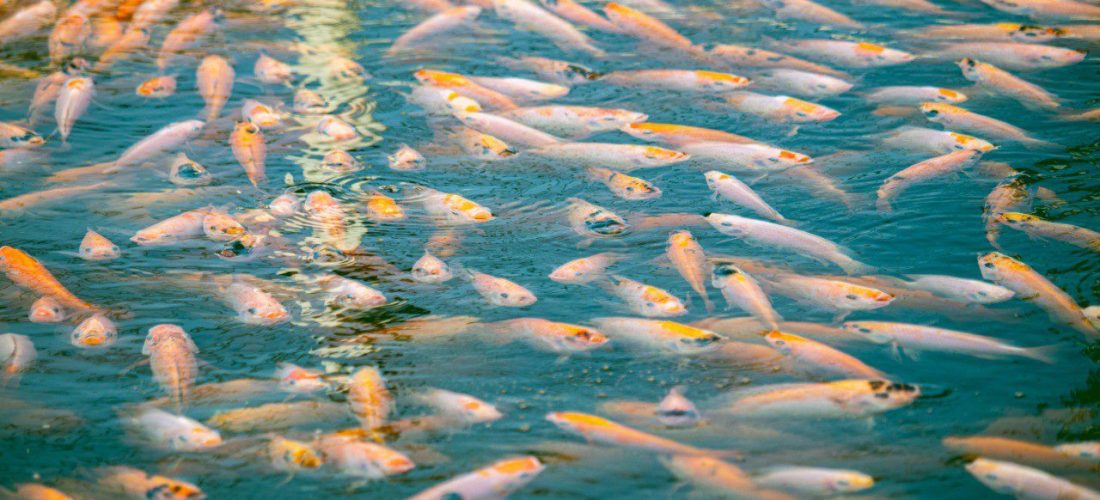Stocking Density in Aquaponics
October 06, 2021
So, let’s say you’ve set up your system, done your research, decided on your type of fish and you’re now ready to stock your system. However, you’ve reached the puzzling question regarding the number of fish to stock. What can your system handle? Does it depend on the type of fish? Don’t worry we’re here to walk you through calculating your stocking density in aquaponics.
What is stocking density?
Stocking density is simply the amount of fish your system can support at optimal capacity. In other words, it is a measure of the total weight of the fish you intend to harvest upon maturity. However, it’s not as simple as researching the stocking density used in aquaponics because the stocking density relies on several factors. The type of fish, the weight of the fish, filtration and aeration components all play a role in determining how many fish your system can handle.
A more advanced aeration setup is required at higher densities to maintain stable dissolved oxygen levels for the fish. In addition to that, more fish will result in more fish waste. Therefore, you need to have an adequate filtration setup in place in order to carry out the biological processes involved in aquaponics.
Stocking Densities for Different Types of Fish.
We usually recommend a stocking density of 25kg/m3 as a guideline for most species. However, make sure to do your research to avoid any losses whether that be in fish mass or finances.
| Tilapia | Catfish | Trout | Carp/Koi |
| 25kg/m3 | 100kg/m3 | 15-20kg/m3 | 25kg/m3 |

How to Calculate Stocking Density.
When calculating the stocking density that is best for your system, we recommend having a stocking density a little lower than the full capacity if you are a beginner. This is just a safety blanket while you’re finding your feet as an aquaponic farmer.
Stocking Density =
Staggered Stocking
An important thing to remember is that your plants depend on your fish. Therefore, we need to make sure there is constant biomass of fish in your system at all times. One way to ensure this is to make use of a staggered stocking method. There are many ways to do this but we recommend having a staged setup. Let’s say you have fish at three different stages in their growth cycle. If carried out correctly this will ensure that you have the same amount of biomass at all times while staggering your harvesting and stocking.
However, it is important to remember that fish can get aggressive towards fish that are smaller in size if kept in the same tank. A solution to this could be keeping multiple fish tanks connected to one system or you could make use of a floating frame cage for the smaller fish.
It’s all in the math when it comes to stocking density. So, make sure you calculate everything accurately to ensure minimal loss and issues down the line. However, if you are still unsure about how to stock your system then please don’t hesitate to book a consultation with us as we would be happy to assist.